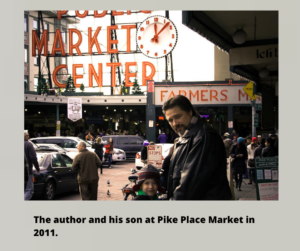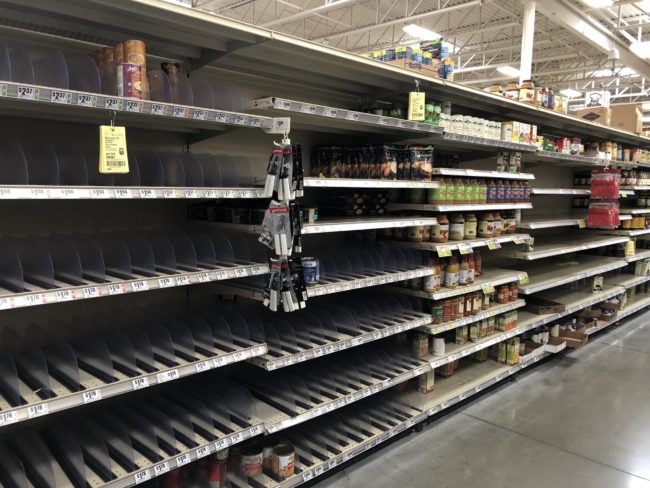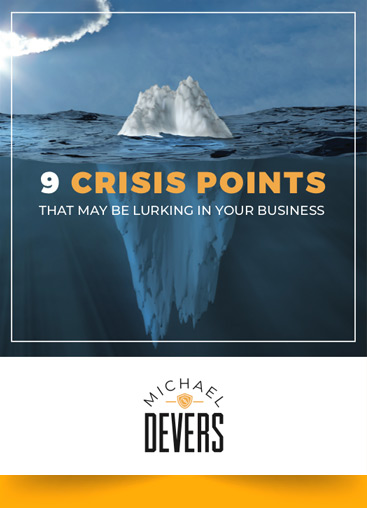“Every negative situation contains the possibility for something positive, an opportunity. It is how you look at it that matters. Your lack of resources can be an advantage, forcing you to be more inventive with the little that you have. Losing a battle can allow you to frame yourself as the sympathetic underdog. Do not let fears make you wait for a better moment or become conservative. If there are circumstances you cannot control, make the best of them. It is the ultimate alchemy to transform all such negatives into advantages and power.”
~ 50 Cent & Robert Greene in the 50th Law
By now, it’s very unlikely that there is a single business anywhere that hasn’t experienced a significant level of disruption due to the COVID-19 Coronavirus crisis. We all hope things will be back to normal soon, but there’s every indication that we are still in the early stages of this crisis.
The world is understandably focused on the outbreak right now, but major business disruptions have happened before. Share on X
While some companies have gone under as a result, others have thrived and emerged from the crisis even stronger. Understanding the reality of the situation is key to emerging even stronger.
As such, you can count on three things:
- The disruption will last longer than you initially think.
- The effects will be more widespread than you initially think.
- It will cost more than you initially think.
It will last longer than you think: The Boeing 737 MAX is still grounded
Boeing’s 737 MAX was grounded in March of 2019 by aviation regulators around the world, including the FAA, following two fatal crashes that killed a combined total of 346 people. Immediately afterwards, Boeing CEO Dennis Muilenburg proposed a software solution and updated pilot training while forecasting a return to service for the 737 MAX by June of the same year. More than a year later, the 737 MAX is still grounded.
Here’s what’s happened since that initial hope-fueled prediction and Boeing’s decision to focus on how quickly they could return the aircraft to the skies:
- Boeing updated and then missed a predicted return to service for the 737 MAX at least three separate times.
- Muilenburg was fired in December 2019 and replaced by new CEO, Dave Calhoun.
- Boeing’s value as a company is currently less than one-third of what it was on the day the 737 MAX was grounded.
- Boeing has losses of over $18 billion related to the 737 MAX. That amount continues to rise.
- In January 2020, Boeing issued a new forecast, predicting a return to service for the embattled 737 MAX in mid-2020.
- Boeing finally halted production of any new 737 MAX aircraft in January of 2020.
- Three additional software flaws were discovered between June 2019 and February 2020. Some of these flaws have been blamed on the software update that Boeing introduced immediately following the grounding.
- Boeing’s 737 MAX remains grounded worldwide.
This disruption in Boeing’s business has lasted much longer than they first thought and predicted. And much longer than their second or even third estimation.
While hindsight is 20-20, it’s more likely that an improved and vastly safer 737 MAX might have been flying again in advance of the 1-year anniversary of the FAA’s decision if the focus had been on the quality of the correction instead of the speed. And, in the end result, focusing on the quality would have produced the added benefit of additional speed.
In the current COVID-19 crisis, the math is quite similar. The more pain we are willing to endure up front in terms of inconvenience and lost business in an attempt to “flatten the curve,” the more business we save ourselves in the long run by shortening the crisis cycle. And in this case, the economic savings pale in comparison to the number of lives potentially saved.
The effects will be more widespread than you initially think: Northern farmers rely on Southern labor
More specifically, the aging farmer population in the northern regions of the United States (such as Minnesota, Washington, the Dakotas, Montana, etc.) rely heavily on laborers imported each year from South Africa. The workers come here on H2-A temporary agriculture visas from South Africa to earn significantly more money than they could in their native country and to help fill the estimated 40,000 worker shortfall in the agricultural industry.
“Farm labor has always been difficult to find,” said Rob Davis, president of the Montana Grain Growers Association and an ag producer with a farm in northeastern Montana. “The qualified ag labor that today’s ag requires is just not out there. We’ve hired local people, gave them the same wages as we’re paying the foreign help, and they just seem to think they’re overworked and underpaid,” Davis added. “Nobody wants to do the work that we need done. I think the longest employment we’ve had with local guys is two weeks.”
Fellow farmer Travis Choat adds that despite offering more than $11.50 per hour, free housing, free beef, and a gasoline allowance, he’s experienced a 300 percent annual turnover rate on the local people he has hired. “We’ve offered the upper end of what we believe we can afford and still stay in business,” Choat commented.
As a result, the farm laborers imported via the H2-A program are vital to keeping these farms producing crops.
“A halt or a drastic slowdown in processing visas will have an immediate domino effect of the domestic food supply of this country,” said David Scaroni, vice president of Fresh Harvest, the country’s largest private contractor of H-2A workers. “No emergency declaration or short-term provision will change this fact.”
With spring arriving early this year, no viable alternative currently in place, and failing a successful flattening of the curve, there is a real danger that South African workers will be unable to re-enter the country in time to do the work necessary to produce the next harvest. If this does come to pass, the additional empty spots on plates this summer and fall will be one of many unforeseen results of COVID-19.
It will cost you more than you initially think: 3.6 > 850
Shortly after midnight on March 24, 1989, an oil tanker, the Exxon Valdez, struck a reef in Prince William Sound, Alaska and, as a result, began spilling what eventually became 10.8 million gallons of crude oil into the water. The spill devastated wildlife along 1,300 miles of coastline and remains the second largest oil spill in U.S. history (trailing only the Deep Water Horizon spill).
In the weeks following the spill, Exxon estimated $850 million in total costs regarding the crisis. Close to a year, following the spill, the company more than doubled their original projection and increased their estimates to $2 billion. Eventually, Exxon spent approximately $2.1 billion on the cleanup, $1 billion in settling civil and criminal charges, and over $500 million in punitive damages. There are no figures for how much the company spent in legal and administrative fees, yet the $3.6 billion total that is known is still four times greater than the original estimates.
And the hidden costs may be multiple times greater than even the $3.6 billion.
Harkening back to the previous point regarding effects being more widespread than initially thought: in late 1994 the very first credit-default swap was created by J.P. Morgan as a vehicle to provide Exxon with a line of credit to cover costs related to the Exxon Valdez spill. Emboldened by the success of the venture, J.P. Morgan streamlined, industrialized, and packaged credit-default swaps and the concept spread like wildfire throughout the financial industry, eventually leading to the global financial meltdown of 2007-2010.
It can be better than you think: A new normal
Knowing that the COVID-19 crisis will last longer, have wider effects, and cost more than initially thought, how can your organization approach the coming weeks and months in a way to avoid the mistakes made by Boeing, Exxon, and countless others?
By building a new normal while preserving and strengthening the core.
Just as it’s impossible to return to the pre-911 days, accept now that there will be no return to the way things were before the world first heard of COVID-19 last December. Don’t waste time wishing for a return to normal. Instead, focus on building a new normal. This is the only way to emerge from a disruptive crisis even stronger than you were going into it.
Focus on what your business or organization does better than anyone else and eliminate anything to the contrary. Share on XFor example, if you’re McDonald’s, drop McCafe immediately and suspend any new efforts that were conceived pre-Corona. Burgers, fries, shakes, and soft drinks are the core. Concentrate your efforts on how you can deliver those items to customers in the current environment.
In the hard-hit state of Washington, the businesses of Seattle’s Pike Place Market have embraced both approaches by banding together to take advantage of what makes them unique: the draw of their  combined offerings. Pike Place vendors with operations not considered essential are able to place their products with the essential vendors who remain open and thereby sustain revenue despite being closed. The vendors also work together on coordinating no-touch delivery.
combined offerings. Pike Place vendors with operations not considered essential are able to place their products with the essential vendors who remain open and thereby sustain revenue despite being closed. The vendors also work together on coordinating no-touch delivery.
Ryan Reese, co-owner of Pike Place Fish Market, when asked about teaming up with other Pike Place vendors commented, “We’re all just bootstrapping right now and trying to provide a safe place where people can support community, food, and community businesses.”
In the process, the Market vendors have created new options for delivery of their goods that not only build off of the strengths of their combined offerings, but also come with a lower cost than the third-party delivery services they relied on prior to the COVID-19 crisis.
Not every business will survive this disruption. But those that do realize normal has been disrupted and they’ve abandoned hoping for its return in favor of creating the new normal.
# # #
SOURCES & FURTHER READING:
The 50th Law by 50 Cent and Robert Greene
Montana farmers turn to South Africa to fill labor gap by David Murray of the Great Falls Tribune.
Will Coronavirus affect food supply? First problem: A possible shortage of workers by Geoffrey Mohan of the Los Angeles Times.
Outsmarted by John Lanchester of the New Yorker.
‘I can’t believe we’re pulling it off’: Pike Place Market vendors band together to survive COVID-19 by Sydney Brownstone of the Seattle Times.




Enjoyed the positive spin. Dark times don’t last forever and exciting things are coming!
Thanks, Carrie! And thanks for your part in the inspiration!